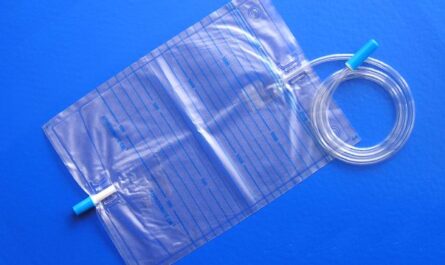
What is Device Reprocessing?
Over the past few decades, major advancements in medical technology have enabled healthcare providers to deliver life-saving care with more precision and less risk to patients. However, high-tech medical equipment comes at a high price. Device reprocessing aims to maximize the use and lifespan of expensive medical equipment in a safe and cost-effective manner. Device reprocessing involves cleaning, disinfecting, inspecting, testing, and refurbishing previously used medical devices to allow repeated safe use. Commonly reprocessed devices include surgical instruments, endoscopes, and laparoscopic equipment.
Cleaning and Disinfection Processes
The first and most important step in device reprocessing is thorough cleaning to remove all residues such as blood, tissue, secretions and debris. Cleaning is typically performed using enzymatic cleaners and disinfectants. Automatic washers may be used to automate the cleaning process for heat-sensitive items. High-level disinfection or sterilization then follows cleaning to eliminate all microbial pathogens. Sterilization destroys all forms of microbial life through steam under pressure (autoclaving) or low-temperature sterilization methods. Stringent quality control checks are vital to ensure cleaning and disinfection are effectively eliminating bioburden and reducing infection risks.
Inspection and Testing of Devices
Once cleaned and disinfected, devices undergo careful visual and functional inspection. Inspectors check for damage, wear and tear, cracks or splits. Any defects found are addressed through repair or replacement. Testing verifies all devices are functioning as intended. For example, pressures tests may check for leaks in surgical instruments. Rigorous quality standards must be maintained throughout inspection and testing to guarantee patient safety. Any devices failing inspection are immediately taken out of service until repairs can be made.
Refurbishing and Restoration
For some medical devices, additional refurbishing or restoration steps are required to return them to their original condition and functioning. This may involve repairing, rebuilding or replacing device components. Refurbishing aims to restore devices to “like new” condition. Common refurbishing procedures include repairing fracture sites on rigid scopes, replacing disposable components in laparoscopic instruments and restoring joints and flexible portions of devices. Refurbishing restores value by extending a device’s usable lifespan and maintains optimal performance.
Regulation and Oversight of Reprocessing
Because device reprocessing involves potentially hazardous medical equipment, strict regulation and oversight is necessary. In the United States, the Food and Drug Administration (FDA) provides guidelines for cleaning, disinfection and sterilization processes. The FDA also requires facilities that reprocess single-use devices to register and list their reprocessed devices. Oversight organizations conduct regular inspections and quality audits of reprocessing facilities to ensure adherence to standards and protocols. International standard-setting bodies like the Association for the Advancement of Medical Instrumentation (AAMI) further guide practices. Proper regulation and monitoring helps guarantee patient safety as the primary priority of reprocessing.
Benefits of Reprocessed Devices
When done correctly according to guidelines, reprocessing medical devices provides many potential benefits. First and foremost, it conserves healthcare resources by extending the usable lifespan of expensive capital equipment. Healthcare facilities save greatly on equipment replacement costs by reusing devices that may have only been used once or twice originally. Reprocessing also promotes environmental sustainability by reducing medical waste. Given growing concerns over e-waste from disposed devices, reuse cuts down on materials ending up in landfills. Most importantly, reprocessing delivers cost savings that can be redirected to expanding access to healthcare and helping more patients. When regulated and overseen properly, reuse of medical devices through reprocessing provides a safe, cost-effective solution.
Key Considerations for Healthcare Facilities
For healthcare facilities considering adopting medical device reprocessing, several factors must be weighed. Facilities need to evaluate their case volumes and types of procedures to determine which devices see enough use to justify reprocessing costs. They also need to assess whether investing in a reprocessing program could generate enough savings versus continual device replacement. Ensuring rigorous cleaning, disinfection and quality control standards can be established and maintained is essential as well. Using vetted, reputable third-party reprocessing service providers can help ensure practices meet all regulatory criteria. Weighing all aspects—from costs, to regulatory requirements, to capacity for proper reprocessing—is important for healthcare facilities in deciding if adopting reuse is a viable option.
Conclusion
When performed correctly according to proper guidelines and regulations, medical device reprocessing provides an important solution for optimizing healthcare resources and lowering costs. By extending the usable lifespan of capital equipment, facilities save greatly on new device purchases while diverting funds to expand patient access. Reprocessing also promotes environmental sustainability by reducing medical waste. As long as public health and safety remains the top priority through meticulous regulation, certification, monitoring and advancement of reprocessing practices, expanding access to these cost-savings benefits makes sense. Device reprocessing continues growing in importance globally as a means to keep healthcare systems sustainable now and for the future.


